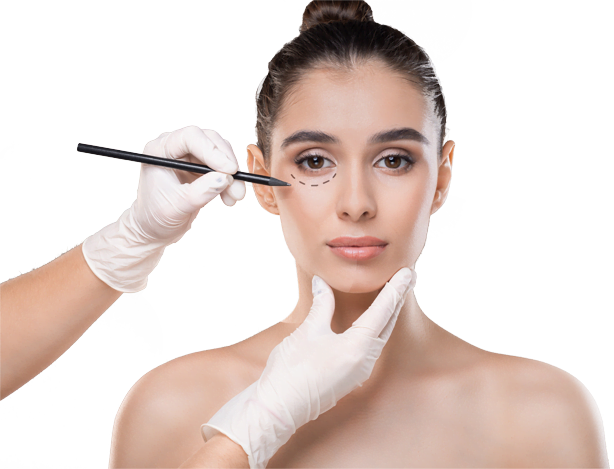
Table of Contents
A Comprehensive Guide for Individuals Seeking Feminization Surgery
When it comes to facial feminization surgery, many individuals desire a softer, more contoured appearance. Cheek implants have become a popular option for those looking to enhance the shape and prominence of their cheeks, helping to achieve a more feminine and youthful face. But one of the most common questions people ask before undergoing this procedure is: “Are cheek implants safe?”
In this blog post, we’ll dive into the safety and effectiveness of cheek implants, particularly for individuals seeking feminization surgery. We’ll break down the process, address common concerns, and provide insights to help you make an informed decision on whether this procedure is right for you.
Understanding Cheek Implants
Silicone or other biocompatible materials are commonly used to manufacture cheek implants, which are small and solid devices. The cheekbones of the face are surgically inserted to create definition in the mid-face area. For transgender people or those undergoing feminization, cheek implants can help to balance and even out their traditionally masculine facial features by providing more natural-looking cheekbones that are more proportional.
Are Cheek Implants Safe?
The short answer is yes, cheek implants are generally considered safe if done by an experienced, board-certified plastic surgeon. Face implants may be risky, but the safety record has been significantly improved by modern surgical techniques and materials. More specifics will be provided below regarding the safety considerations.
- Biocompatibility of the Materials
The safety of cheek implants is largely dependent on the materials used. The bulk of implant-based cheeks are made of solid silicone, which is biocompatible and designed to blend with your body. For extended periods, silicone is safe due to its long-lasting properties, safety, and minimal allergen risk.
Other materials, such as porous polyethylene, are also present to allow tissue to grow into the implant and provide it with more stability. You can rely on your surgeon to guide you in selecting the appropriate material.
- The Procedure is Highly Controlled
There is a history of successful chest enlargement surgeries. You can either go under general anesthesia, or you can choose local (with sedation) depending on your preference and the advice of your doctor. The use of implants through small incisions inside the mouth or through the lower eyelid can reduce scarring.
- Recovery is Manageable
Typically, patients will experience swelling and bruising after the surgery, which is typical for surgical procedures. It is possible for most people to resume their daily routines within a week, but they should still avoid strenuous physical activity.
Following your surgeon’s post-operative instructions will help you recover quickly and efficiently, minimizing the risk of infection or implant displacement. The swelling eventually diminishes, and the final outcome begins to manifest itself more fully, almost as a woman.
Potential Risks and Complications
The risks associated with cheek implants are generally low, but no surgical intervention is completely risk-free. Although uncommon, it’s crucial to be mindful of potential complications, particularly if the surgery is performed by an experienced surgeon. Some of the possible dangers include:
- Infection
Infection is a common risk during surgery, but with proper sterilization methods and post-operative care, infection rates are very low. If an infection does occur, antibiotics are usually prescribed. Occasionally, the implant may need to be temporarily removed and reinserted after the infection is resolved in very rare circumstances. - Implant Shifting or Displacement
Occasionally the implant in the cheek may move out of its place. A minor corrective surgery may be necessary to reposition the implant in case of this situation. This danger can be reduced with the right surgical technique and careful post-operative care. - Scarring or Asymmetry
Despite the fact that incisions are often made inside the mouth or eyelid to avoid scarring during cheek implants, there’s still a possibility of internal scaring from other wounds, which can cause symmetry. By choosing a skilled surgeon who has expertise in facial feminization surgery, this risk is reduced once again.
Which people are suited for Cheek Implants?
The use of cheek implants is a viable option for those seeking to enhance their facial structure, while the need for feminization surgery by transgender individuals necessitates this aspect. The ideal candidate for a cheek replacement is someone who:
- Is in overall good health.
- Holds positive expectations for what is to come.
- Desire for cheek lift and plumpness.
- Desires to enhance the appearance of their face through facial hair removal techniques.
- Ensures that patients follow post-operative care instructions with minimal discomfort and pain during the procedure.
- You should carefully consult with your surgeon before deciding whether or not to have cheek implant surgery, as this is the most effective way to achieve your desired outcome.
How do cheek Implants gain popularity in Feminization Surgery?
The surgical process of facial feminization is necessary for many transgender individuals to achieve a natural-looking face that corresponds to their gender identity. Feminine facial features are often accentuated by chest implants, which add volume and softness to the face. This is a key factor in this feminization.
The placement of implants on the cheeks can not only enhance facial definition but also provide a more cohesive and natural appearance. Cheek implants, whether combined with a jaw contouring, brow reduction or rhinoplasty in general; are also versatile and can give the aesthetic appeal.
Alternatives to Cheek Implants
Cheek implants provide a lasting enhancement to the face, but not for everyone. There are alternative options for those who are uncertain about getting implants or want a less radical solution, such as:
- Dermal Fillers
To add volume to the cheeks, injectable dermal fillers like hyaluronic acid or collagen can be used without surgery. The results are only temporary, lasting anywhere from 6 months to 2 years, but they offer a less intrusive alternative for those who are not confident about the efficacy of implants. - Fat Transfer
The other option is fat transfer, which involves extracting fat from another area of the body (such as the abdomen or thighs) and injecting it into the cheeks. The use of your own tissue in this method minimizes the likelihood of an allergic reaction or implant rejection. Despite this, the outcome can be less predictable than with implants, and the procedure is more intricate than fillers.

